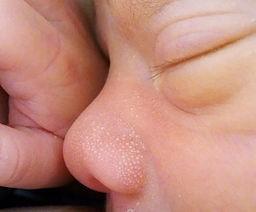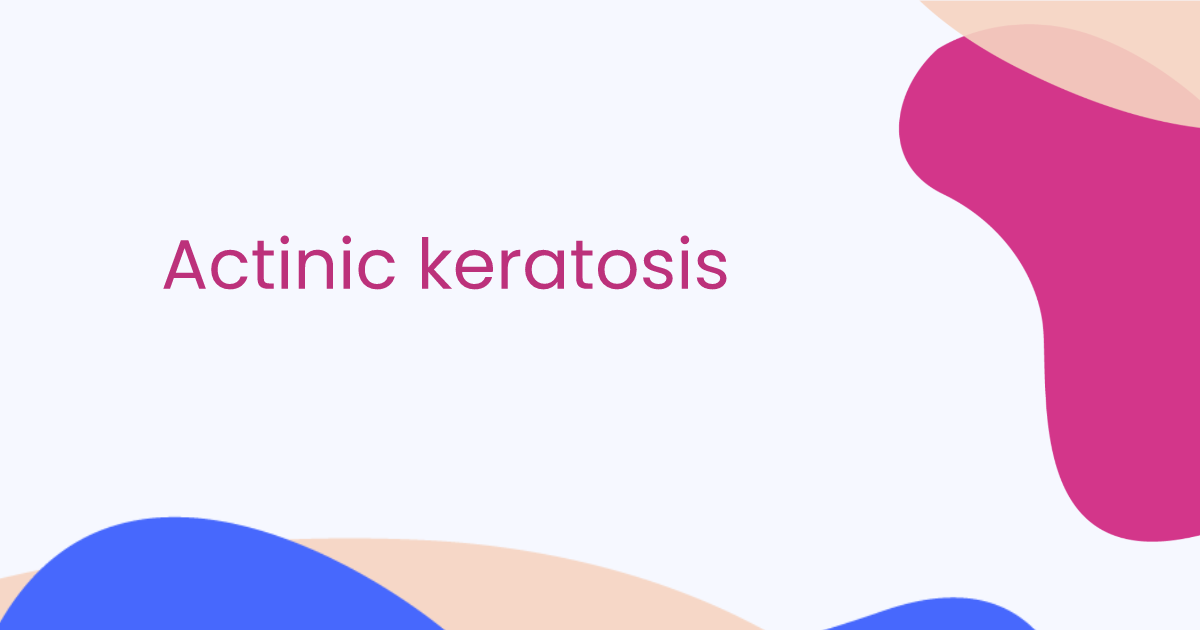Milia
Peer reviewed by Dr Hayley Willacy, FRCGP Last updated by Dr Philippa Vincent, MRCGPLast updated 18 Apr 2023
Erfüllt die Anforderungen des Patienten redaktionelle Richtlinien
- HerunterladenHerunterladen
- Teilen Sie
- Sprache
- Diskussion
Milien sind sehr kleine, erhabene, perlweiße oder gelbliche Beulen auf der Haut. Am häufigsten sind sie auf der Haut um Wangen, Nase, Augen und Augenlider, Stirn und Brust zu sehen. Sie können aber auch überall am Körper auftreten. Milien sind bei Neugeborenen sehr häufig, können aber Menschen jeden Alters betreffen. Bei Säuglingen verschwinden die Milien von selbst, und es ist keine Behandlung erforderlich. Bei anderen Menschen kann es länger dauern, bis sie verschwinden. In hartnäckigen Fällen kann eine Behandlung vorgeschlagen werden.
In diesem Artikel:
Lesen Sie unten weiter
Was sind Milien?
A milium is a small, raised bump on the skin. It is a type of tiny skin cyst filled with a protein called keratin.
Many are usually found together and so they are called milia (the plural of milium).
What do milia look like?
Milien bei einem Neugeborenen

Von Serephine, CC0, über Wikimedia Commons
As can be seen in the picture, milia are usually each about 1 or 2 millimetres across and are pearly-white or yellowish. They appear to be small white bumps on the face.
They are most often seen on the skin around the cheeks, nose, eyes and eyelids, forehead and chest but they can occur anywhere on the body.
Lesen Sie unten weiter
Types and causes of milia
There are different types of milia.
Neonatal milia
These are milia that are seen in young babies soon after they are born. They are very common and are usually found around the nose area but may also occur on the scalp, cheeks, upper body and inside the mouth. They are thought to arise from sweat glands that aren't fully developed or mature. Around half of all babies develop neonatal milia. In fact, because they are so common, they are actually considered as normal in newborn babies - often they are called "milk spots" although they are nothing to do with milk. They usually disappear by 12 weeks of age.
Primäre Milien
These are milia that can occur in both children and adults. They occur in an area of skin that has otherwise been normal without any previous damage or injury.
Secondary milia
These are milia that develop in an area of skin, anywhere on the body, that has previously been damaged or injured. For example, after a burn or a blistering rash. The milia develop as the skin heals and it is thought that damage to the sweat glands may be an underlying cause. Secondary milia also sometimes develop after some skin creams have been used.
Milia en plaque
Milia of this type are extremely rare. The milia develop on an inflamed, raised patch of skin known as a plaque which may be several centimetres across. The cause of milia en plaque is not fully understood. It usually occurs behind the ears, on an eyelid or on the cheeks or jaw area. This type of milia tends to particularly affect middle-aged women.
Multiple eruptive Milien
The milia appear in crops, or patches, of milia that develop over a period of weeks or months. The crops usually appear on the face, the upper arms and the upper trunk. Milia of this type are also extremely rare.
Milia-Symptome
Milia do not usually cause any symptoms but,they can occasionally become itchy.
Lesen Sie unten weiter
How are milia diagnosed?
Milia are usually diagnosed by their typical appearance and generally no investigations are needed. However, occasionally, if the diagnosis is uncertain or if milia en plaque are suspected, a skin biopsy might be recommended.
During a skin biopsy, a small piece of skin is removed so that it can be examined under a microscope. There are different ways that a skin biopsy can be carried out. For example, by shaving away a small piece of skin or by using a special instrument to punch a tiny hole in the skin.
How long do milia last?
Milia are harmless and, in most cases, they will eventually clear by themselves. In babies, they clear after a few weeks. However, in some people, milia can persist for months or longer. Secondary milia are sometimes permanent.
Behandlung von Milien
Because they normally clear by themselves, milia do not usually need any treatment. However, some people find them unsightly and so opt for treatment to remove milia.
Milia removal
Milia may be removed using a fine needle and then squeezing, or pricking, out the contents. No anaesthetic is needed. However, it is not recommended to squeeze or try to treat milia yourself. This can lead to skin damage and scarring or infection.
If milia become very widespread and persistent, various other treatments may be suggested, usually by a skin specialist (a dermatologist). They include:
Cryotherapy: a type of treatment that freezes skin lesions. Where a patch of skin has changed in appearance, it is known as a skin lesion.
Laser treatment.
Dermabrasion: a procedure that removes the topmost layers of the affected skin.
Chemical peeling: a treatment where a chemical is applied to the face to burn off skin lesions.
In the rare type of milia called milia en plaque, certain creams such as isotretinoin or tretinoin are sometimes suggested as treatment, or the antibiotic tablet, minocycline.
Can milia be prevented?
Most milia cannot be avoided, particularly neonatal milia. The risk of developing secondary milia development can be reduced by avoiding excessive sun exposure, only using steroid creams for the length of time they are prescribed and regularly exfoliating and cleansing the skin to remove dead skin cells.
Patienten wählen aus für Hautausschläge

Gesundheit von Haut, Nägeln und Haaren
Aktinische Keratose
An actinic keratosis (also known as a solar keratosis) is the most common skin condition caused by sun damage. It is the result of skin being damaged by the sun over many years. Actinic keratoses are usually rough, scaly patches on sun-exposed areas such as the head and face. Actinic keratoses are common, especially in older people, many of whom have more than one. Usually they are harmless but there is a small risk that they may eventually turn into skin cancer and therefore treatment may be advised.
von Dr. Doug McKechnie, MRCGP

Gesundheit von Haut, Nägeln und Haaren
Pemphigus vulgaris
Pemphigus vulgaris ist eine sehr schwere Hautkrankheit, die Blasen verursacht. Sie ist selten. Pemphigus vulgaris ist ernster als die meisten anderen blasenbildenden Hautkrankheiten. Bevor eine Behandlung zur Verfügung stand, starben die meisten Betroffenen kurz nach Ausbruch der Krankheit. Heutzutage können die meisten Fälle mit einer Behandlung unter Kontrolle gebracht werden. Die Behandlung erfolgt in der Regel mit Steroidpräparaten und anderen Medikamenten zur Unterdrückung des Immunsystems. Die Behandlung sollte von einem Hautarzt überwacht werden.
von Dr. Oliver Starr, MRCGP
Weiterführende Literatur und Referenzen
- O'Connor NR, McLaughlin MR, Ham PDie Haut des Neugeborenen: Teil I. Häufige Hautausschläge. Am Fam Physician. 2008 Jan 1;77(1):47-52.
- Milium, MilienDermNet NZ
Lesen Sie unten weiter
Artikel Geschichte
Die Informationen auf dieser Seite wurden von qualifizierten Klinikern verfasst und von Fachleuten geprüft.
Nächste Überprüfung fällig: 16. April 2028
18 Apr 2023 | Neueste Version
15. März 2012 | Ursprünglich veröffentlicht
Verfasst von:
Dr. Michelle Wright, MRCGP

Fragen, teilen, verbinden.
Stöbern Sie in Diskussionen, stellen Sie Fragen, und tauschen Sie Erfahrungen zu Hunderten von Gesundheitsthemen aus.

Fühlen Sie sich unwohl?
Beurteilen Sie Ihre Symptome online und kostenlos
Sign up to the Patient newsletter
Your weekly dose of clear, trustworthy health advice - written to help you feel informed, confident and in control.
By subscribing you accept our Privacy Policy. You can unsubscribe at any time. We never sell your data.